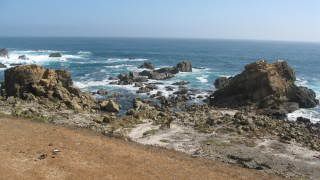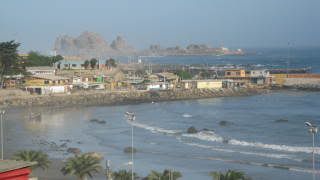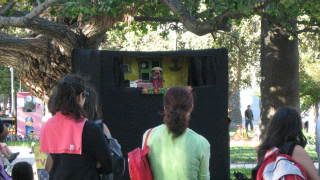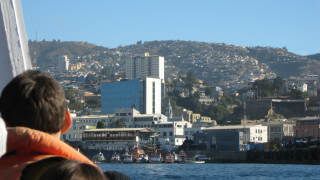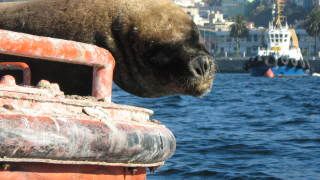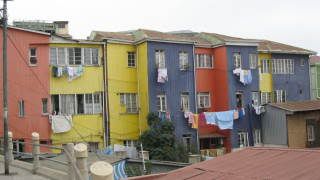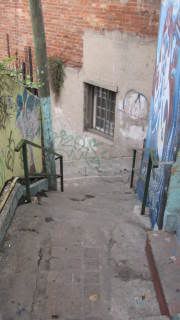Some random thoughts on leaving Chile.
TRAVEL
Chile is a difficult country to get around in, especially in the more rural parts of the country. Taking public transport is frequently a challenge. One of the problems is simply finding out which bus leaves for where and when. As in most latin american countries, the bus lines are privatized. If you're lucky, there will only be one or two bus stations in a town. Sometimes each bus line will have its own station or stop. Fortunately, the chilenos are inordinately helpful and will direct you to the right bus station. In the south of Chile, a bus may run only a couple of times a week. It will not timely connect with an ongoing ferry, etc. This means you have to be very flexible in your travel plans. Frequently places you may want to get to are not reachable by bus.
Definitely the best way to visit Chile is with a car. The best way to do this is to rent a car. The downside to this is that it is hugely expensive. Not only do you have to pay for gas, you'll also have to pay tolls on the many toll roads, ferry charges, and insurance. You'll have to travel out of Chile into Argentina and back in again which means you'll have to buy insurance valid in Argentina. Last but not least, when you return the car to the agency, some 2000 miles away from where you started, you'll have to pay a "drop-off fee" which can be way over $1000. My recommendation would be to try to travel with 2 or 3 other people and share the huge expense of that rental car.
There's one other alternative that is more attractive; that's to buy your own car and then sell it at the end of your trip. Unfortunately, this is easier said than done. I'm told that you cannot buy a car in Chile if you're not a resident. You'd have to strike some sort of deal with a resident whereby you "borrow" their car. Even that gets a little risky considering you'll have to cross into Argentina and back again.
In Patagonia and southern Chile, there is very limited bus contact between Chile and Argentina. Traveling back and forth across the border on public transport leaves you with some very limited options. The ferry from Puerto Natales going north only goes all the way (3 days, 4 nights) to Pto. Montt, not to any in-between ports. This is because they want to make money and they charge exorbitant prices for the long trip.
Another option is to fly. Sky Airlines is Chile's equivalent of Southwest. It's relatively cheap and provides great service on short hops throughout Chile. The downside is that you only see the beautiful countryside from 30,000 feet.
LANGUAGE
Like other countries of the "southern cone," chilenos speak a language that is somewhat unique. The Spanish that we may have learned in high school, that we hear on spanish language tv, etc., is referred to by chilenos as "castellano." Because they watch tv, etc., they can understand castellano well. However, frequently, when they talk, it comes out chileno. I would analogize it to learning British English and then stepping off the airplane in south central L.A. and attempting to talk with people who speak ebonics. They may understand you speaking British English, but you may have a very difficult time understanding them.
It's also something of a class thing. The higher the social class the more likely it is that they will be able to modify their language so as to make it understandable by you. Once they determine you're following along, they unconsciously start sliding back into chileno, and it becomes increasingly difficult to follow along.
An example: when I landed in Punta Arenas, I had an interesting conversation with the landlady of my hostal. It was in castellano/chileno but the story can be told equally well in English. She said there was another guest in the house from "Ahlahka." I asked "Where?" She said again "Ahlahka." I said I didn't know where that was. She then pointed with her finger in upward movements: "You know: the United Tate, Canada, and Alahka." "Oh, of cour!" I answered "THAT Ahlahka." The Chilenos frequently do not pronounce the letter "s." Sometimes, the phrasing is sufficiently familiar that you can mentally supply the missing letters; other times not.
We English speakers place great emphasis on the consonants; the vowels sort of come along for the ride. If you hit all the consonants correctly, it doesn't matter too much how badly you mangle the vowels in between. For Spanish speakers, it's just the opposite: the vowels are critical, consonants are those things you don't bother to pronounce, particularly if they're at the end of the word. This habit carries over to when a spanish speaker speaks english. We might hear some one say:
"I ha the chan to ree the boo." (I had the chance to read the book).
Likewise, we gringos frequently misuse vowels. The result is that when trying to say "She did it," it comes out "I do it." All because of a slight change in vowels.
NATIONALISM
Chilenos are very, very proud of their country. If one were to come up with some sort of "patriotism scale," where 0 represents total indifference and 10 represents the ultimate patriot, I would place Europeans generally at about a 4, Americans at about a 6, and chilenos at an 8. This sense of patriotism is strongly supported by the government as well. The country is quite young. It's "founding fathers" are a colorful bunch of genuine characters whose lives make fascinating reading. They have been made consciously into "heroes," by and large. One can definitely understand the government's desire to stimulate a sense of national identity. Keep in mind that the country is almost 3,000 miles long and in places less than 200 miles wide. There are sections (Patagonia and Chiloe come to mind) where many people feel themselves independent of either Chile or Argentina and would like to be viewed so. It doesn't help the cause of national identification that there isn't even a road that connects the north to the south. You have to travel out of Chile into Argentina and then come back in again, or else take a ferry or fly, in order to try to travel the length of the country. One wonders: if, God forbid, there were an incursion by Argentina into Patagonia or Tierra del Fuego, how would the Chilean military be supplied? Remember that one important reason why the US has interstate freeways is that Eisenhower wanted them built for self-defense purposes.
One consequence of this sense of nationalism is that it can be very touchy to express a comment about Chile that could be interpreted as critical.
FRIENDLINESS
The one overriding impression of chile and chilenos that I take away is the incredible friendliness of the people. I have mentioned this several times in my blog but it bears repeating. When asking directions, I've had people insist on driving me to where I was going. I've had people on the street, noticing that I looked lost, ask me if they could help me. Many people initially are quite shy. However, once you strike up a conversation with them (for example, the person sitting next to you on the bus), they open up. There's a heightened sense of what I would call "graciousness." This character trait definitely makes Chile a place where you the visitor feel welcome.






